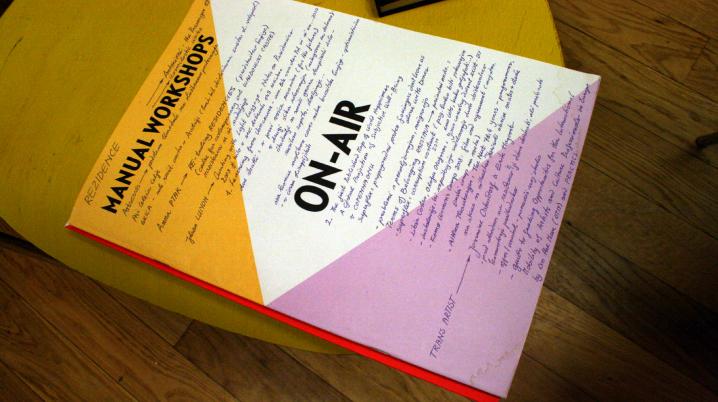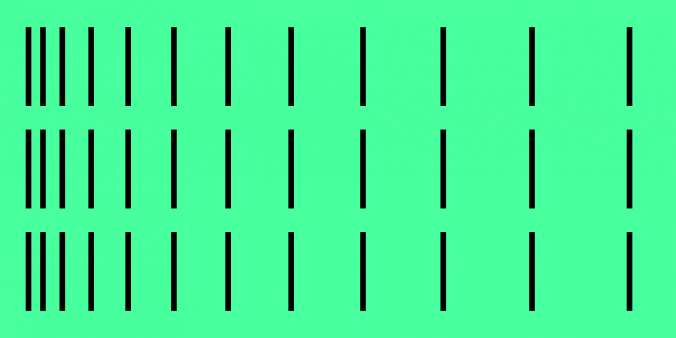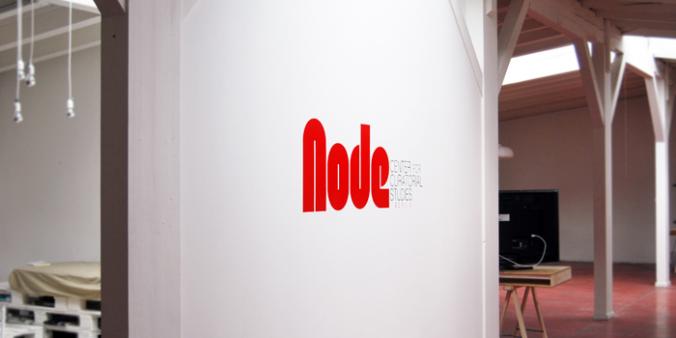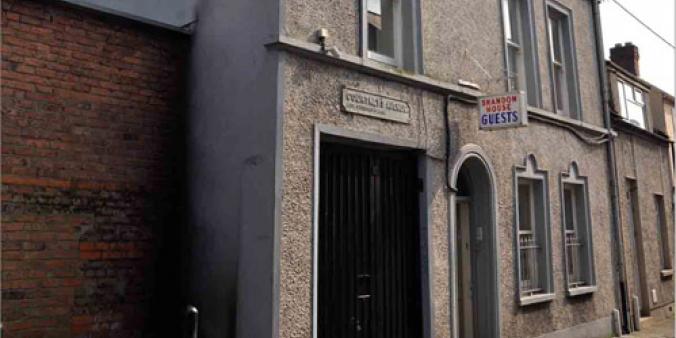
Curator-in-residence opportunities
Curating in residence was the main focus of the ON-AiR workshop in Ljubljana, organised by Artservis & SCCA, Ljubljana, December 6th, 2011.
What is the use and value of artist-in-residence programs for curators? TransArtists, together with curators Johan Lundh and Anna Ptak, and the participants of the World of Art curator course of the SCCA Ljubljana, reflected upon the potential of the artist-in-residence sector for curating.
Workshop
Twelve participants of the World of Art curator course attended the workshop. Beforehand, they had been asked to search for residency programs, which offer opportunities for curators. They were asked to send in their answers to the following questions:
- why do you as a curator choose for this specific residency center, for what reasons?
- what priority following order would you give to these reasons?
- what is the 'profile' of the residency of your choice, regarding your interests as curator?
- how does the 'profile' of this residency match with your plans for staying there as curator-in-residence?
These questions might give a "schoolish" impression, yet they proved to be very fruitful for the exchange of thoughts during the workshop about motivations and expectations of starting curators to stay and work at residency programs.
Specific curating-in-residence motivations
Motivations to choose for a specific curator-in-residence program differed, as expected, per person. Roughly sketched the following motivations were mentioned:
- concentrated time for research and for writing, to be able to prepare or close one's own curatorial project.
- getting to know the local art world and expanding one's network.
- being able to have studio visits for a specific curatorial project.
- the residency's specific theme, which matches with the curator's interest.
- peer review by fellow curators & education by experienced curators.
- collaboration on the spot with artists-in-residence.
- being able to realize a curatorial project in residence.

Matching
Most attention during the workshop was paid to the issue how to match your own ambitions and expectations with the aims and expectations of the residency center.
Participant Maja Antončič for example selected the Italian residency center UNIDEE - Citadellarte, because it matched her interest in collaboration within an interdisciplinary context, and because she thought to gain a lot experience from the well-defined program. However, she asked herself the following:
"As the UNIDEE program is quite focused, I’m a bit worried how much time I would have for my own curatorial research or project. I wonder, how open they are for your own initiative. I’m not sure, that I can be as free as I wish to be in choosing and deepening my interests."
We discussed different ways how to fine-tune the matching process:
- getting in direct contact with the residential art center to ask your questions.
- checking out other people's experiences, for instance on the TransArtists website: Experiences
- most residency websites offer a list of former visiting artists and curators: check it out yourself, try to get in direct contact with them.
Perfect matches....
Lenka Đorojević's perfect match would be Node Center for Curatorial Studies in Berlin: "Especially because of its dynamic approach of contemporary curatorial and artistic theory and praxis. Each trimester the topic of the curatorial programme is changed, exploring curatorial practices that expand their own mechanisms, opening new discursive possibilities. An important part of the program is the presentation of temporary exhibitions proposed by the residents of the Node center. Therefor this would be my ideal curator-in-residence program."
Nina Skumavc: "My ideal residency would be The Guesthouse in Cork, Ireland, because it is an artist-run-initiative. You don't need to pay, but instead you are asked to participate in the program, and that's what I like. In that way you can really contribute something interesting to the local scene and multicultural community. So I would meet interesting people, learn from them through talking and working and especially be driven and inspired to work by living together, spending time with other creative individuals."
CPH AIR, the artist-run-residence of the City of Copenhagen, was mentioned by Maja Alibegovicas as the ideal curator-in-residence program for her, for a specific reason: "Design is in fact my primary field of knowledge and Nordic graphic design is one of my main research fields. CPH AIR focuses on design and offers also residencies for graphic designers. The best contact for me as curator!"
Outside the comfort zone?
Surprisingly none of the workshop participants had selected a curator-in-residence opportunity in Africa, Asia, Middle-East, or Latin-America. A short discussion about this lack of preference for residencies outside the western world led to the conclusion that most of the workshop participants were young, starting curators, willing to gain more experience in curating contemporary art, and that this still seems to be contemporary art in the western world.
Nevertheless, TransArtists encouraged the workshop participants not to focus too easily on USA and Europe. Especially in Africa recently many new residencies offer workshop-like residencies, in which exchange with fellow artists and curators is central. From participating in these short-term workshop-residencies a lot of experience can be gained. See for more information on short-term, workshop-residencies this part of the Trans Artists report on the Cairo Residency Symposium of 2009.
 Reflections on curator-in-residence by curator Johan Lundh
Reflections on curator-in-residence by curator Johan Lundh
currently co-director and curator at CCA Derry Londonderry
As published in the Dutch magazine for Contemporary Art Metropolis M #6, 2011.
"Residencies appear to be everywhere, and everyone seems to participate in them. Most of them are geared towards artists but residencies for curators and critics are becoming increasingly popular. Over the last few years, I have done my share of them, throughout Europe and North America. Using them both as a tool for research and implementation of exhibitions and events, I have in the eyes of some colleagues become an authority on them.
Consequently, this past September in Helsinki, I found myself participating in yet another conference regarding them. Since the early 1990s, the number of artist residencies has grown rapidly throughout the world. According to TransArtists, the most comprehensive website cataloging residencies, there are currently more than a 1000 worldwide, and most of them have cropped-up the last twenty years. Residencies have become an integral part the institutionalized art world, adopting similar formats everywhere. Almost everywhere."
Read here the full article by Johan Lundh with his reflections on curator-in-residence programs.





